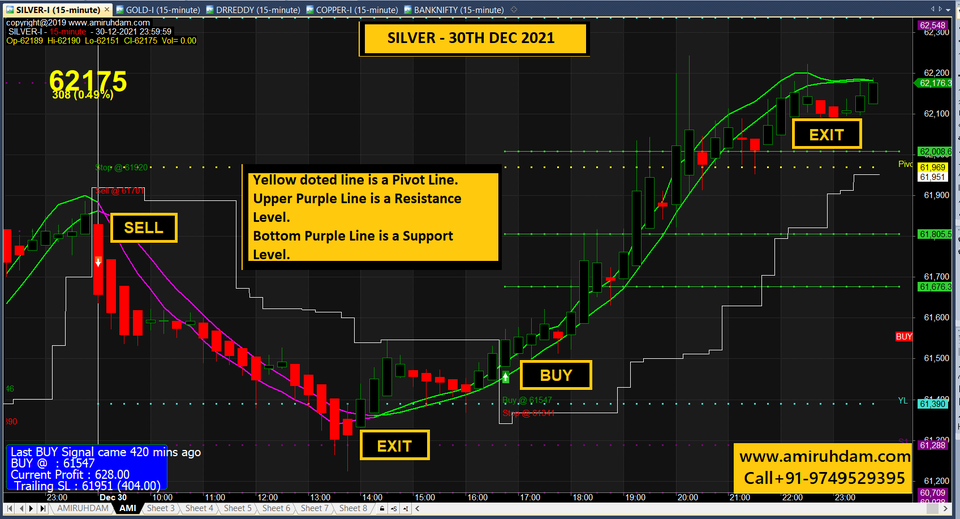Unlock the Potential of Trading with Amiruhdam Guidance and Software Support
How to do Intraday trading? We known as day trading, involves buying and selling financial instruments within the same trading day. It’s a popular strategy among traders seeking to profit from short-term price fluctuations in the market. This article will guide you through the essentials of intraday trading, from understanding its fundamentals to mastering effective strategies and risk management techniques.
Introduction: How to Do Intraday Trading
What is Intraday Trading?
Intraday trading refers to the buying and selling of stocks, currencies, commodities, or other financial instruments within the same trading day. Unlike traditional investing, where assets are held for weeks, months, or even years, intraday traders aim to capitalize on small price movements that occur within the day.
Importance of Intraday Trading
Intraday trading offers several advantages, including the potential for high returns within a short period. It allows traders to leverage market volatility to their advantage and generate profits irrespective of whether the overall market is rising or falling.
Benefits of Intraday Trading
High Potential Returns
Intraday trading offers the potential for significant returns due to the frequent buying and selling of assets within a single trading day. Traders can capitalize on even minor price movements to generate profits, provided they execute their trades effectively.
Leveraging Market Volatility
Volatility, which refers to the degree of price fluctuations in the market, is a day trader’s friend. Intraday traders thrive on volatility as it creates ample opportunities to enter and exit trades profitably. By analyzing price movements and market trends, traders can identify potentially lucrative opportunities and capitalize on them.
Understanding Intraday Trading Strategies
Intraday trading strategies vary depending on individual preferences, risk appetite, and market conditions. Some popular strategies include:
Scalping
Scalping involves making numerous small trades throughout the day, aiming to profit from small price movements. Scalpers typically hold positions for a few minutes to a few hours and rely on tight stop-loss orders to limit losses.
Momentum Trading
Momentum traders focus on stocks or assets exhibiting strong upward or downward momentum. They aim to capitalize on the continuation of existing trends by entering positions in the direction of the prevailing momentum.
Range Trading
Range trading involves identifying areas of support and resistance within which a stock or asset is trading. Traders buy near support levels and sell near resistance levels, profiting from price oscillations within the established range.
Selecting Stocks for Intraday Trading
Volume and Liquidity : When selecting stocks for intraday trading, it’s crucial to focus on highly liquid securities with ample trading volume. Stocks with high liquidity ensure smooth execution of trades and minimal slippage, thereby enhancing trading efficiency.
Volatility : is a key consideration for intraday traders as it determines the profit potential of a trade. Stocks with higher volatility offer greater profit opportunities but also entail higher risk. Traders must assess volatility levels and adjust their trading strategies accordingly.
Sector Analysis : Intraday traders often specialize in specific sectors or industries to capitalize on sector-specific trends and catalysts. Conducting thorough sector analysis helps traders identify stocks with the highest profit potential and minimize exposure to unfavorable market conditions.
Technical Analysis Tools for Intraday Trading
Technical analysis plays a crucial role in intraday trading, helping traders identify potential entry and exit points based on historical price data and market trends. Some commonly used technical analysis tools include:
Moving Averages
Moving averages help smooth out price fluctuations and identify trends by calculating the average closing price over a specified period. Traders use moving averages to gauge the direction and strength of a trend and identify potential reversal points.
Relative Strength Index (RSI)
The RSI is a momentum oscillator that measures the speed and change of price movements. It oscillates between 0 and 100 and is used to identify overbought and oversold conditions in the market. Traders use the RSI to confirm trend strength and potential trend reversals.
Candlestick Patterns
Candlestick patterns provide valuable insights into market sentiment and price action. Traders analyze patterns such as engulfing patterns, doji, and hammer to anticipate potential reversals or continuation of trends.
Risk Management in Intraday Trading
Position Sizing : Position sizing involves determining the appropriate number of shares or contracts to trade based on the size of the trading account and risk tolerance. By sizing positions appropriately, traders can minimize the impact of losses on their overall portfolio.
Avoiding Overtrading : Overtrading, or excessive trading, can deplete trading capital and increase the risk of losses. Traders should adhere to a disciplined trading plan and avoid the temptation to trade excessively, especially during periods of heightened market volatility.
Psychological Aspects of Intraday Trading
Patience and Discipline : Patience and discipline are key virtues of successful intraday traders. It’s essential to wait for high-probability trading opportunities and avoid impulsive decision-making. By exercising patience and discipline, traders can maintain consistency and profitability in the long run.
Tips for Beginners in Intraday Trading
Educate Yourself Continuously : Intraday trading requires constant learning and adaptation to evolving market conditions. Beginners should invest time in educating themselves about technical analysis, risk management, and market psychology to improve their trading skills and decision-making abilities.
Start Small and Gradually Increase Position Size : To minimize risk, beginners should start with small position sizes and gradually scale up as they gain experience and confidence. By starting small, traders can mitigate potential losses and build a solid foundation for long-term success.
Common Mistakes to Avoid in Intraday Trading
Chasing Momentum Blindly : Chasing momentum without proper analysis can result in entering trades at the peak of a trend, leading to losses when the trend reverses. Traders should avoid blindly following momentum and instead focus on identifying high-probability trading opportunities based on sound analysis.
Lack of Patience : Impatience can lead to entering trades prematurely or exiting them too soon, missing out on potential profits. Traders should exercise patience and wait for confirmation signals before executing trades, ensuring a higher probability of success.
Conclusion
Intraday trading offers exciting opportunities for traders to profit from short-term price fluctuations in the market. By understanding the fundamentals of intraday trading, mastering effective strategies, and implementing sound risk management techniques, traders can enhance their chances of success and achieve their financial goals.
FAQs About How to Do Intraday Trading
Let’s address some frequently asked questions to further enhance our understanding of how to do intraday trading.
Intraday trading can be challenging for beginners due to its fast-paced nature and high risk. It’s essential for beginners to educate themselves thoroughly and start with a demo account before risking real capital.
The amount of capital required for intraday trading varies depending on individual trading goals and risk tolerance. It’s advisable to start with a small amount of capital and gradually increase it as you gain experience and confidence.
The best times to trade intraday are typically during periods of high market volatility, such as the first hour after the market opens and the last hour before it closes. Traders should also pay attention to economic news releases and corporate earnings announcements, as they can impact market volatility.
Risk management is essential in intraday trading to protect capital and minimize losses. Traders should use stop-loss orders, manage position sizes, and diversify their trading strategies to mitigate risk effectively.
While intraday trading involves risk and uncertainty, it is not akin to gambling. Successful intraday traders employ strategic analysis, risk management, and discipline to make informed trading decisions and achieve consistent profitability.
Unlock the potential of your trading career with Amiruhdam and witness the growth and success it can bring to your trading career. Feel free to drop a mail at contact@amiruhdam.com or call us +919749529395 our Expert will connect with you soon.




